
HNO
Scope & Guideline
Advancing Knowledge in Ear, Nose, and Throat Disorders
Introduction
Aims and Scopes
- Advanced Computational Techniques:
The journal emphasizes research that applies advanced algorithms, particularly in deep learning and machine learning, to solve complex problems across various fields. - Healthcare Applications:
A significant portion of the publications focuses on the application of computational techniques in healthcare, including medical image analysis and disease diagnosis. - Image and Signal Processing:
The journal features studies on image enhancement, analysis, and denoising, highlighting innovative methods for improving image quality and extracting meaningful information. - Data Privacy and Security:
Research related to secure data sharing, including privacy-preserving methods in medical and personal data contexts, is a recurring theme. - Multi-modal Analysis:
The journal explores the integration of different data modalities (e.g., visual, auditory) for comprehensive analysis and understanding of complex phenomena. - Optimization and Decision Support Systems:
Papers often cover optimization techniques in various domains, including resource allocation, scheduling, and decision-making systems.
Trending and Emerging
- Interdisciplinary Applications of AI:
There is a growing trend towards applying AI techniques across various disciplines, particularly in healthcare, environmental monitoring, and smart cities, indicating an interdisciplinary approach to problem-solving. - Explainable AI and Trustworthy Systems:
Research focusing on explainable AI and the development of trustworthy systems is increasingly prominent, driven by the necessity for transparency and accountability in AI applications. - Federated Learning and Data Privacy:
Emerging interest in federated learning reflects a response to data privacy concerns, with researchers exploring decentralized methods that allow for collaborative learning without compromising sensitive information. - Real-Time Data Processing and Edge Computing:
The trend towards real-time data processing and the application of edge computing technologies is rising, especially in IoT applications, highlighting the need for efficient computational methods. - Integration of Multi-Modal Data:
There is an increasing focus on integrating multi-modal data (e.g., combining audio, video, and sensor data) for comprehensive analyses, particularly in applications like emotion recognition and human-computer interaction.
Declining or Waning
- Traditional Machine Learning Methods:
As deep learning techniques gain more traction, traditional machine learning methods are becoming less prominent in the journal's publications, reflecting a broader trend towards neural network-based approaches. - Basic Image Processing Techniques:
There appears to be a decrease in focus on foundational image processing techniques, as more complex and integrated solutions are being favored in recent research. - Theoretical Frameworks Without Application:
Papers that present theoretical models without practical application or case studies are less frequently published, as the journal increasingly values research with demonstrable real-world impact. - Standalone Hardware Solutions:
There is a noticeable decline in research focused solely on hardware solutions for computational tasks, as the emphasis shifts towards software-driven approaches and algorithms.
Similar Journals
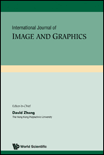
International Journal of Image and Graphics
Transforming Ideas into Stunning Visual RealitiesInternational Journal of Image and Graphics, published by World Scientific Publishing Co. Pte Ltd, serves as an essential platform for scholars and practitioners in the realms of Computer Graphics, Computer-Aided Design, and Computer Vision and Pattern Recognition. Established in 2001 and based in Singapore, this journal has become increasingly influential, with a reputation reflected in its Q3 and Q4 rankings across key categories in Scopus, highlighting its growing impact in the academic community. Open access options remain limited; however, the journal's commitment to disseminating high-quality research allows for a rich exchange of ideas among professionals and students alike. As the 2023 metrics indicate, contributions to the journal not only enhance individual academic portfolios but also promote advancements in image processing, fostering innovation and growth within the discipline until at least 2024. It is thus a vital resource for anyone looking to deepen their knowledge and understanding of contemporary trends and technologies in image processing and related fields.

International Arab Journal of Information Technology
Catalyzing Ideas for the Next Generation of TechnologyWelcome to the International Arab Journal of Information Technology, a prestigious publication under the aegis of ZARKA PRIVATE UNIVERSITY in Jordan, dedicated to advancing the field of Information Technology. First established in 2008, this journal has made significant strides in disseminating high-quality research, achieving an impressive Q2 ranking in Computer Science (miscellaneous) and securing a notable 57th percentile position in the Scopus rankings. With a comprehensive scope encompassing various sub-disciplines of computer science, the journal is committed to promoting scholarly dialogue and innovation among researchers, professionals, and students. While currently operating as a subscription-only journal, it remains a vital resource for the academic community seeking to explore the latest trends and advancements in technology. The International Arab Journal of Information Technology is not only a platform for original research but also a vibrant hub for ideas that shape the technological landscape of the Arab region and beyond.

IMAGE AND VISION COMPUTING
Elevating academic discourse in image and vision computing.Image and Vision Computing, published by Elsevier, serves as a leading international journal focused on the dynamic fields of computer vision, pattern recognition, and signal processing. With its esteemed Q1 category rankings in these areas and an impressive standing in Scopus metrics, where it ranks 19th in Computer Vision and 23rd in Signal Processing, this journal has firmly positioned itself at the forefront of academic research and innovation. Established in 1983, it continues to publish cutting-edge research that drives advancements in technology and applications across various domains. The journal is committed to disseminating high-quality, peer-reviewed articles that address significant challenges and propose novel solutions, making it an essential resource for researchers, practitioners, and students alike. While not an open access journal, Image and Vision Computing offers a wealth of valuable insights into the ever-evolving landscape of visual computing technologies.
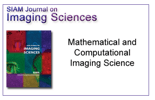
SIAM Journal on Imaging Sciences
Exploring New Horizons in Imaging Techniques.SIAM Journal on Imaging Sciences is a prestigious academic journal published by SIAM PUBLICATIONS, focusing on the latest advancements and applications in imaging sciences within the fields of applied and general mathematics. Since its inception in 2008, the journal has established itself as a premier outlet for original research, evidenced by its remarkable standing in the academic community, including a Q1 ranking in both Applied Mathematics and Mathematics (miscellaneous) for 2023. With a Scopus rank of #45 in General Mathematics and an 88th percentile achievement, the journal continues to attract high-quality contributions, making it a vital resource for researchers, professionals, and students eager to stay at the forefront of imaging science developments. Although not currently open access, the journal provides significant visibility through its rigorous peer-review process and commitment to scholarly excellence, ensuring that published works contribute substantially to knowledge in the field. For those looking to delve into innovative imaging techniques or mathematical modeling approaches, the SIAM Journal on Imaging Sciences remains an essential reference point.
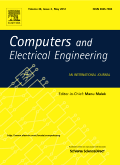
COMPUTERS & ELECTRICAL ENGINEERING
Exploring the Frontiers of Computer Science and Electrical Engineering.COMPUTERS & ELECTRICAL ENGINEERING is a premier academic journal published by PERGAMON-ELSEVIER SCIENCE LTD, based in the United Kingdom. Established in 1973, the journal has consistently contributed to the fields of Computer Science, Control and Systems Engineering, and Electrical and Electronic Engineering. With an impressive impact factor and ranked in the top quartile (Q1) across these domains, it is recognized as a pivotal resource for researchers, practitioners, and students alike. The journal aims to disseminate high-quality research articles, reviews, and technical notes, with the goal of advancing understanding and fostering innovation within and beyond its scope. Researchers can enjoy unparalleled access to cutting-edge findings and technological advancements through contributions that span both theoretical frameworks and practical applications, making it an essential platform for anyone dedicated to exploring the intersections of these dynamic fields.

MULTIMEDIA TOOLS AND APPLICATIONS
Transforming ideas into applications in multimedia technology.MULTIMEDIA TOOLS AND APPLICATIONS, published by Springer, is a highly regarded journal in the fields of Computer Networks and Communications, Hardware and Architecture, Media Technology, and Software. Since its inception in 1995, this journal has established itself as a vital platform for disseminating innovative research and developments, maintaining a prominent position evidenced by its Q2 and Q1 rankings across various categories as of 2023. With an ISSN of 1380-7501 and an E-ISSN of 1573-7721, it continues to attract high-quality contributions from scholars and practitioners worldwide. Although it does not currently offer Open Access options, its impact is reflected in impressive Scopus rankings, placing it in the top quartiles in multiple categories, including a remarkable 10th rank in Media Technology. As the field evolves rapidly, the journal’s objectives encompass advancing multimedia technologies and exploring their multifaceted applications, making it an essential resource for researchers, professionals, and students seeking to stay at the forefront of this dynamic discipline. For more information, visit the journal's page to explore recent publications and submission guidelines.
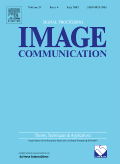
SIGNAL PROCESSING-IMAGE COMMUNICATION
Exploring the Synergy of Vision and CommunicationSIGNAL PROCESSING-IMAGE COMMUNICATION, published by Elsevier, is a leading journal in the fields of Computer Vision, Signal Processing, and Electrical Engineering. With an impressive range of Quartile rankings in 2023, including Q1 in Electrical and Electronic Engineering and Q2 in Signal Processing, this journal is vital for researchers and professionals seeking the latest advancements and comprehensive studies in image communication technologies. Issued in the Netherlands, SIGNAL PROCESSING-IMAGE COMMUNICATION has been an essential resource since its inception in 1989, fostering innovation and collaboration among academia and industry. The journal provides a platform for high-quality peer-reviewed research, addressing significant challenges and solutions in the convergence of image processing and communication. Although currently not an Open Access journal, it offers subscription options that ensure a broad dissemination of groundbreaking knowledge. With a robust reputation reflected in its Scopus ranks, this journal serves as an indispensable reference for students and experts aiming to stay at the forefront of developments in this dynamic field.
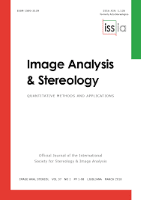
Image Analysis & Stereology
Unlocking the Potential of Image AnalysisImage Analysis & Stereology is a premier open-access journal dedicated to the dynamic fields of image analysis and stereological methods, published by the International Society for Stereology. Since its inception in 2000, this journal has provided an essential platform for researchers and professionals to disseminate their findings and share innovative methodologies across various disciplines, including Acoustics, Biotechnology, Computer Vision, and Materials Science. As a respected publication with a broad scope, the journal holds a Q3 ranking across multiple categories and is indexed in Scopus. With its commitment to advancing research and enhancing academic discourse, Image Analysis & Stereology is vital for anyone involved in quantitative imaging studies, offering valuable insights and access to groundbreaking research in a rapidly evolving landscape.
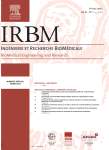
IRBM
Advancing Knowledge at the Intersection of Science and EngineeringIRBM, published by Elsevier Science Inc, stands at the forefront of research in the domains of Biomedical Engineering and Biophysics, boasting impressively high rankings with a Q1 category in both fields according to the 2023 evaluations. With an effective focus on cutting-edge innovations and methodologies, IRBM provides a vital platform for researchers, professionals, and students alike seeking to disseminate and access groundbreaking findings and developments. Its strong presence in the Scopus database, with ranks of #12 in Biochemistry, Genetics and Molecular Biology and #42 in Biomedical Engineering, places it in the top percentile of impactful journals in the field, making it a crucial resource for advancing knowledge and fostering collaboration. While the journal maintains a traditional subscription model, it continues to attract a diverse readership eager for insightful studies and reviews that push the boundaries of science and engineering. With a projected convergence of years extending to 2024, IRBM promises to remain a significant contributor to the ongoing dialogue in the life sciences.
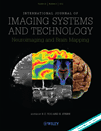
INTERNATIONAL JOURNAL OF IMAGING SYSTEMS AND TECHNOLOGY
Bridging Disciplines through Cutting-Edge Imaging ResearchINTERNATIONAL JOURNAL OF IMAGING SYSTEMS AND TECHNOLOGY, published by Wiley, is a leading journal dedicated to advancing the field of imaging systems and technologies. With an ISSN of 0899-9457 and E-ISSN 1098-1098, this esteemed journal offers a platform for high-quality research spanning essential interdisciplinary areas, including Biomedical Engineering, Computer Science, and Health Informatics. Recognized for its impactful contributions, it holds a commendable position in the Q2 quartile across multiple categories as of 2023. The journal boasts an excellent Scopus ranking, with notable acknowledgments like rank #49 out of 333 in Radiology, Nuclear Medicine, and Imaging, showcasing its relevance and importance in the academic community. Publishes annually from 1989 to 2024, it aims to bridge gaps in knowledge and foster innovative developments through rigorous peer-reviewed articles. Though it operates under a traditional access model, the journal maintains an accessible repository of cutting-edge research, making it indispensable for researchers, professionals, and students alike seeking to stay at the forefront of imaging technology advancements.